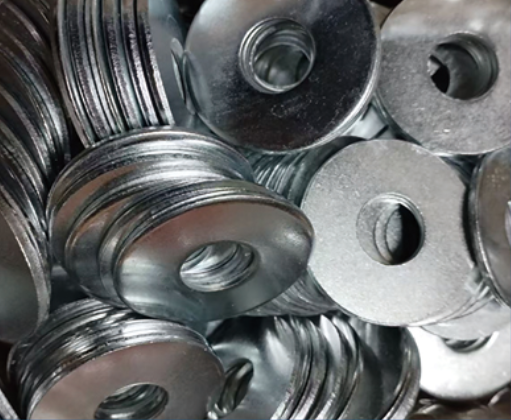Understanding Quality Stainless Steel Flat Cushions in Industrial Applications
In the industrial equipment and components sector, particularly in fastening systems, the use of quality stainless steel flat cushions is crucial for enhancing performance and longevity. These components, often referred to as flat washers, serve multiple functions, including load distribution, surface protection, and prevention of loosening under vibration.
Stainless steel is particularly favored
Jun 15,2025

In the industrial equipment and components sector, particularly in fastening systems, the use of quality stainless steel flat cushions is crucial for enhancing performance and longevity. These components, often referred to as flat washers, serve multiple functions, including load distribution, surface protection, and prevention of loosening under vibration.
Stainless steel is particularly favored for its corrosion resistance, strength, and overall durability. In environments where moisture, chemicals, or extreme temperatures are present, quality stainless steel flat cushions outperform their counterparts made from other materials. This durability ensures that they maintain structural integrity over time, thereby reducing maintenance costs and prolonging the lifespan of machinery and equipment.
When selecting quality stainless steel flat cushions, several factors must be considered. The first is the type of stainless steel used. There are different grades, with 304 and 316 being the most common. Grade 316 stainless steel, for instance, provides better resistance to chlorides and is ideal for marine or chemical applications. Understanding the specific environmental conditions and requirements of your application is essential to choosing the right grade.
Another important consideration is the size and thickness of the flat cushion. These dimensions can significantly impact their effectiveness in load distribution and surface protection. Properly sized flat cushions help to prevent damage to the materials being fastened and ensure even pressure during assembly, facilitating a more secure connection.
The surface finish of the flat cushions also plays a significant role in their performance. A smooth finish is often preferred, as it reduces the potential for surface damage and improves the aesthetic quality of the assembly. In certain applications, a textured finish may be beneficial, providing enhanced grip and reducing the risk of slippage.
In addition to these factors, the manufacturing process of quality stainless steel flat cushions is critical. Precision machining and quality control measures ensure that each component meets stringent industry standards. This not only guarantees reliability but also assures that the flat cushions can withstand the rigors of industrial use without failure.
In conclusion, quality stainless steel flat cushions are indispensable in the realm of industrial fastening and connection. Their corrosion resistance, strength, and ability to distribute loads effectively make them a preferred choice across various applications. By considering material grade, size, surface finish, and manufacturing quality, professionals can ensure that they select the most appropriate flat cushions for their specific needs, ultimately enhancing the reliability and efficiency of their operations.
Stainless steel is particularly favored for its corrosion resistance, strength, and overall durability. In environments where moisture, chemicals, or extreme temperatures are present, quality stainless steel flat cushions outperform their counterparts made from other materials. This durability ensures that they maintain structural integrity over time, thereby reducing maintenance costs and prolonging the lifespan of machinery and equipment.
When selecting quality stainless steel flat cushions, several factors must be considered. The first is the type of stainless steel used. There are different grades, with 304 and 316 being the most common. Grade 316 stainless steel, for instance, provides better resistance to chlorides and is ideal for marine or chemical applications. Understanding the specific environmental conditions and requirements of your application is essential to choosing the right grade.
Another important consideration is the size and thickness of the flat cushion. These dimensions can significantly impact their effectiveness in load distribution and surface protection. Properly sized flat cushions help to prevent damage to the materials being fastened and ensure even pressure during assembly, facilitating a more secure connection.
The surface finish of the flat cushions also plays a significant role in their performance. A smooth finish is often preferred, as it reduces the potential for surface damage and improves the aesthetic quality of the assembly. In certain applications, a textured finish may be beneficial, providing enhanced grip and reducing the risk of slippage.
In addition to these factors, the manufacturing process of quality stainless steel flat cushions is critical. Precision machining and quality control measures ensure that each component meets stringent industry standards. This not only guarantees reliability but also assures that the flat cushions can withstand the rigors of industrial use without failure.
In conclusion, quality stainless steel flat cushions are indispensable in the realm of industrial fastening and connection. Their corrosion resistance, strength, and ability to distribute loads effectively make them a preferred choice across various applications. By considering material grade, size, surface finish, and manufacturing quality, professionals can ensure that they select the most appropriate flat cushions for their specific needs, ultimately enhancing the reliability and efficiency of their operations.
ANTERIOR:

 中文版
中文版 English
English Русский
Русский عربي
عربي





